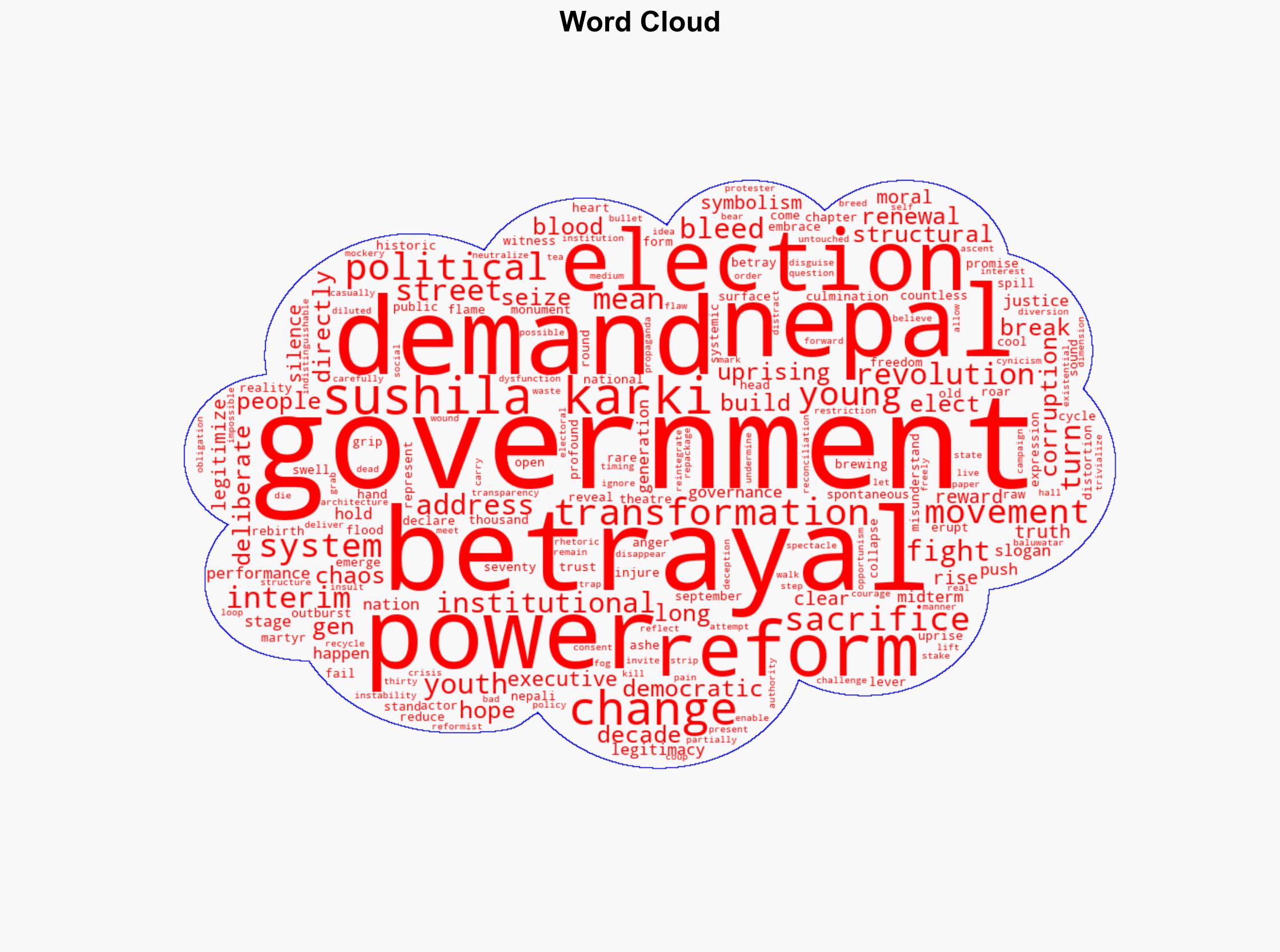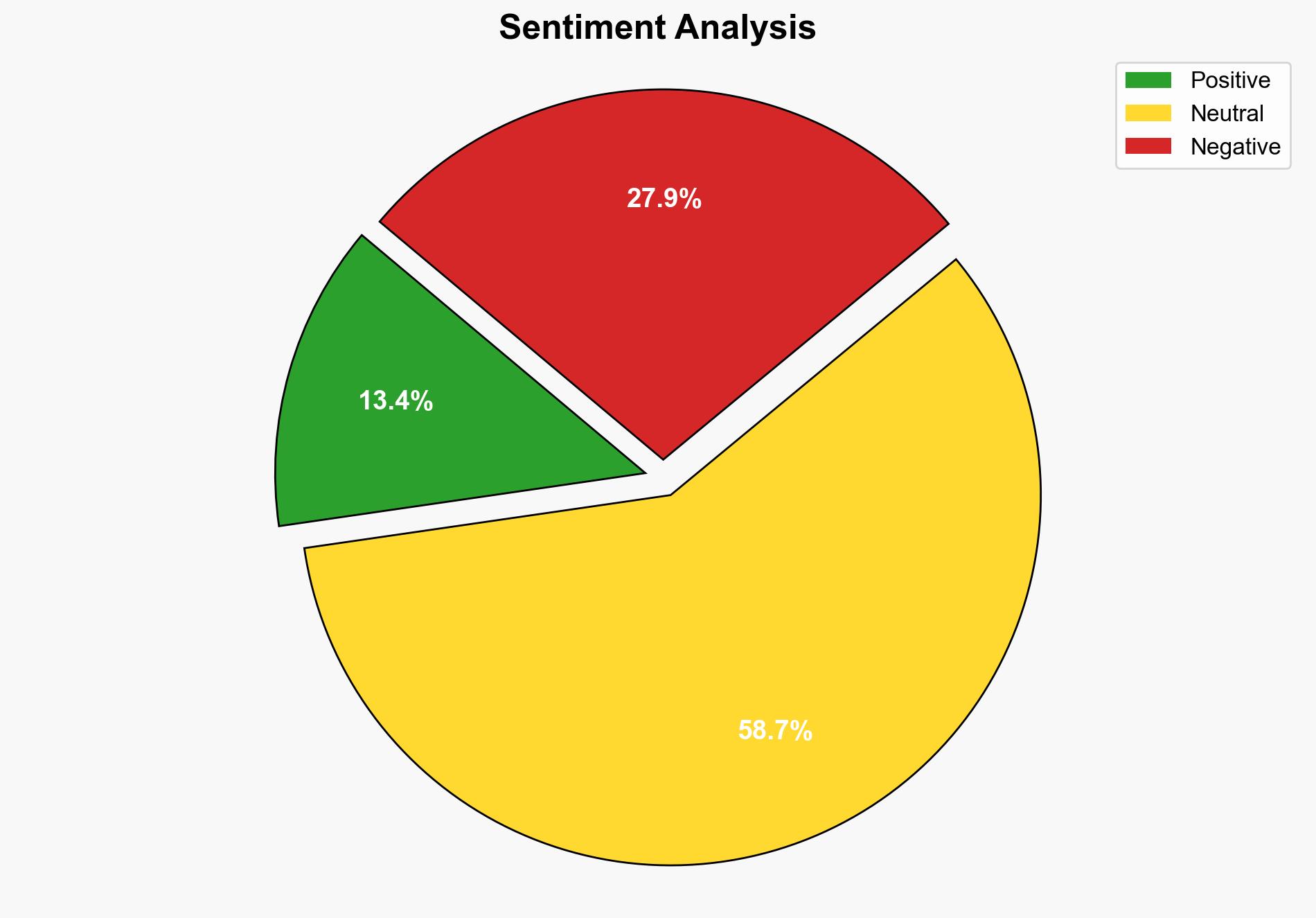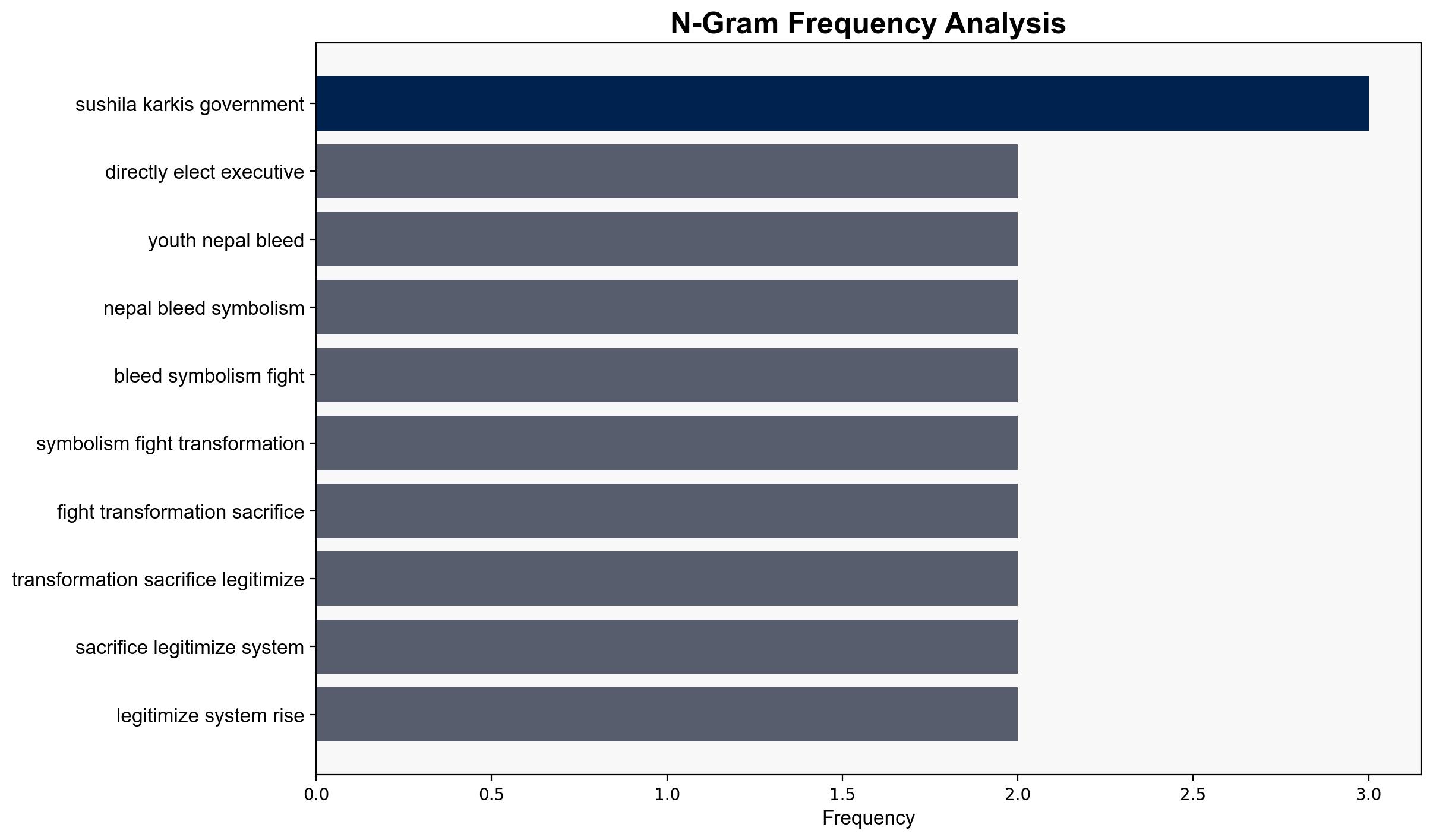A New Chapter of Betrayal – Khabarhub.com
Published on: 2025-10-31
Intelligence Report: A New Chapter of Betrayal – Khabarhub.com
1. BLUF (Bottom Line Up Front)
The current political situation in Nepal, characterized by the rise of Sushila Karki’s interim government, is a complex interplay of genuine reformist intentions and potential power consolidation. The most supported hypothesis is that the interim government is a strategic maneuver to maintain the status quo under the guise of reform. Confidence level: Moderate. Recommended action: Monitor developments closely, focusing on institutional reforms and public sentiment to assess the government’s legitimacy and potential for genuine change.
2. Competing Hypotheses
1. **Hypothesis A**: Sushila Karki’s interim government represents a genuine attempt to address public demands for systemic reform and is a response to widespread dissatisfaction with past governance.
2. **Hypothesis B**: The interim government is a strategic facade to placate public unrest while preserving existing power structures, using reformist rhetoric to disguise a lack of substantive change.
Using the Analysis of Competing Hypotheses (ACH) 2.0, Hypothesis B is better supported due to the historical pattern of political actors in Nepal using reformist language without enacting meaningful change. The persistence of institutional corruption and the rapid push for midterm elections without addressing structural flaws further support this hypothesis.
3. Key Assumptions and Red Flags
– **Assumptions**:
– Hypothesis A assumes that the interim government has both the intent and capability to implement genuine reforms.
– Hypothesis B assumes that historical patterns of political behavior will continue, prioritizing power retention over reform.
– **Red Flags**:
– The rapidity of the interim government’s formation and the push for elections without clear reform plans.
– The potential use of reformist rhetoric as a tool for political manipulation.
– **Blind Spots**:
– Lack of detailed information on the interim government’s specific reform strategies.
– Potential underestimation of public sentiment and grassroots movements.
4. Implications and Strategic Risks
– **Political Instability**: Continued dissatisfaction could lead to further unrest and protests, potentially destabilizing the region.
– **Economic Impact**: Prolonged political uncertainty may deter foreign investment and impact economic growth.
– **Geopolitical Concerns**: Regional actors may exploit the situation to influence Nepal’s political landscape.
– **Psychological Impact**: Public disillusionment with political processes may increase cynicism and reduce civic engagement.
5. Recommendations and Outlook
- Monitor the interim government’s policy announcements and actions closely to assess the sincerity of reform efforts.
- Engage with civil society and grassroots movements to gauge public sentiment and potential for future unrest.
- Scenario Projections:
– **Best Case**: Genuine reforms are implemented, leading to increased stability and economic growth.
– **Worst Case**: The interim government fails to enact meaningful change, leading to widespread unrest and potential violence.
– **Most Likely**: Incremental reforms are made, but significant power structures remain unchanged, leading to moderate instability.
6. Key Individuals and Entities
– Sushila Karki
7. Thematic Tags
national security threats, political instability, governance reform, regional focus




